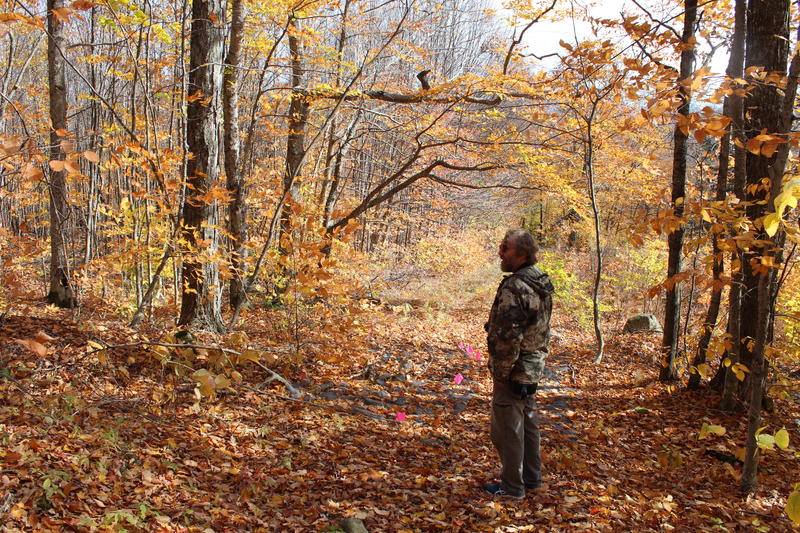Pandemic Sparks Innovation At New Hampshire’s Influential Hubbard Brook Experimental Forest

Dartmouth biologist Matt Ayres stands on a path in the Hubbard Brook Experimental Forest, near pink flags marking research areas. (Annie Ropeik/NHPR)
At the Hubbard Brook Experimental Forest in northern New Hampshire, the pandemic broke a decades-long streak of field research. Now, scientists there are adapting with new technology – recording the sounds of the forest, which they hope will transform their long and influential record of a changing world.
In late fall, Dartmouth biologist Matt Ayres stands out in camouflage and cargo pants against the bright yellow of the woods. He’s got binoculars around his neck, and he’s loading gear from his truck into a backpack – two kinds of batteries, microphones, GPS devices and more.
Ayres’ specialty is caterpillars and other insects, but today’s he’s here on a bird monitoring mission in this 12-square-mile research forest, created by the federal government on the southeast slopes of Mount Moosilauke in the 1950s.
Hubbard Brook is where scientists first discovered acid rain, which Ayres says helped transform environmental protection in America.
“So when they started collecting those water samples and analyzing the chemistry…they didn’t know that that would inspire the Clean Air Act of 1967,” Ayres says. “And they didn’t know that those same samples now show that the Clean Air Act has been one of the best examples of environmental stewardship ever.”
Read the rest of the story at NHPR’s website.
